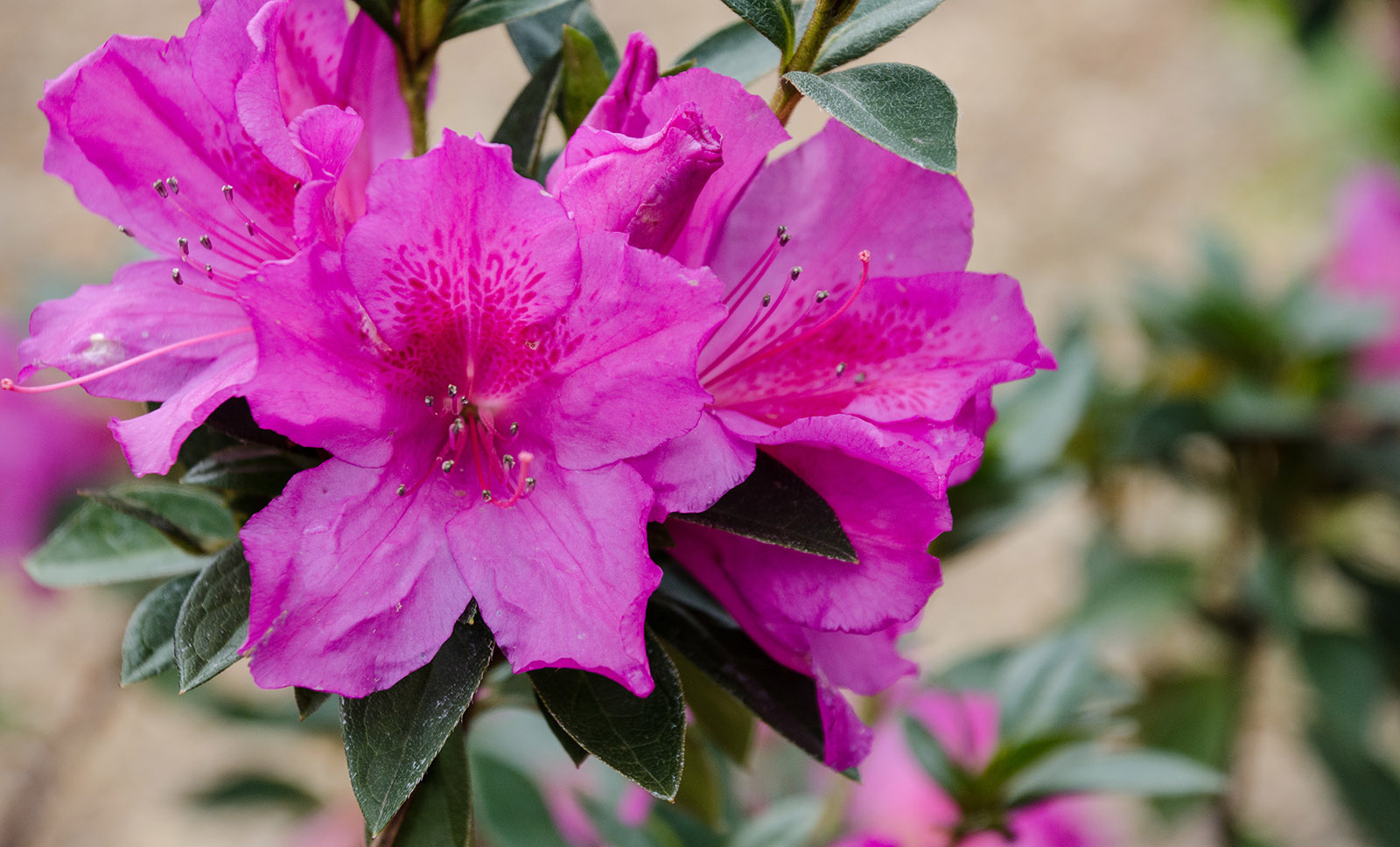
Azaleas Served Two Ways: Cloud Pruning vs Selective Pruning
Selective pruning produces a natural looking plant, with overlapping layers of foliage, visual depth, and an organic shape with loosely defined edges. This technique allows you to control the size and general shape of azaleas without losing the natural character of the plants. Selectively pruned azaleas fit nicely in woodland settings, they make excellent privacy hedges, or they can be used to mark the transition from your formally maintained garden into wild or unmanaged areas.
How to Selectively Prune Azaleas
The goal of selective pruning is to remove growth, which controls the shape and size of the plant, without changing the natural feel of the plant. This is achieved by removing individual branches, one at a time, and at varying heights. Use loppers and hand pruners to do this type of work.
Start by looking at the plant in question from a distance, decide what shape and size you wish to create. Like a sculptor looking at a block of marble, you need to see the finished shape inside the unpruned mass of foliage before you start cutting. This ideal image will guide your cuts. Once you have an idea of what shape and size your are trying to achieve, begin removing growth from the outside. Grab the tallest or widest branch and see where it leads inside the shrub. Prune the branch inside the mass of the shrub. Everywhere you cut a branch, new branches will sprout and start to grow. Therefore, you must cut branches lower than your ultimately desired height. This allows room for the new branches to grow without exceeding your intended size.
After each cut, move on to the next tallest/longest/widest branch and remove it by cutting it inside the shrub. Eventually the outline of the plant will get smaller, but there will still be many twigs and branches that have not been cut. These uncut stems help preserve the natural look of the plant. You never want to cut all the branches when selectively pruning. It’s ok to just take a few larger branches out and leave most of the plant untouched. There’s no wrong way to selectively prune, just remove chunks of the plant instead of cutting the tips off of the entire thing.
Perform significant pruning in the spring, as soon as the flowers drop. If your plants are getting a bit too leggy for your liking you can do another round of pruning in the early summer, but not as severe as in the spring. Just remove the tips of the longest branches in summer to round out the shape. You shouldn’t prune azaleas after the 4th of July or you will limit your blooms for next spring.
I used to insist that all azaleas be selectively pruned, but I’ve come around to the cloud pruning style. When done well, the results are amazing, like living sculptures that light up every spring. Cloud pruned azaleas are sheared tightly into a variety of shapes, which creates a more formal appearance. Doing it well takes a bit more expertise but allows you to create works of art that will wow your friends and neighbors.
How to Cloud Prune Azaleas
The goal of cloud pruning is to produce full, dense plants with clearly defined edges. Cloud pruned shrubs can take on any shape you want, but the name is inspired by rounded plants with irregular shapes, just like clouds! Feel free to let your creativity flow when shaping cloud pruned azaleas. Globes are fine, but I love to see irregular outlines form with undulating edges and mounds. Don’t be afraid to let those clouds be lumpy! Use shears to do this type of work.
The trick with cloud pruning is to maintain the tight shape, without removing all the flowering wood. After the blooms drop in spring, prune the entire shrub hard, shear the whole plant into the shape you want but make sure the size is 6”-12” smaller than you plan on maintaining it throughout the year. Once the new growth extends beyond the desired size, you can shear it anytime during the rest of the growing season to maintain the desired shape and size. Just be sure to preserve that 6”-12” layer of spring growth because those are the branches that will flower next year. You can continue to shear these plants throughout summer as needed to keep them clean and pretty, but you cannot cut into or remove that 6”-12” layer of spring growth or you will get few to no flowers next spring.
Versatility is one of the great benefits of azaleas. Not only do they flower in a rainbow of color, but you can prune them to suit the needs of any garden aesthetic. There’s no right or wrong way to prune your azaleas, so pick the method that brings joy to your garden and enjoy the beauty of spring!

*This article was written by Jonathan Burns (Tallahassee Nurseries Outdoor Manager, FNGLA Florida Certified Horticulture Professional)
informed by years of personal observations growing in the Tallahassee area.

